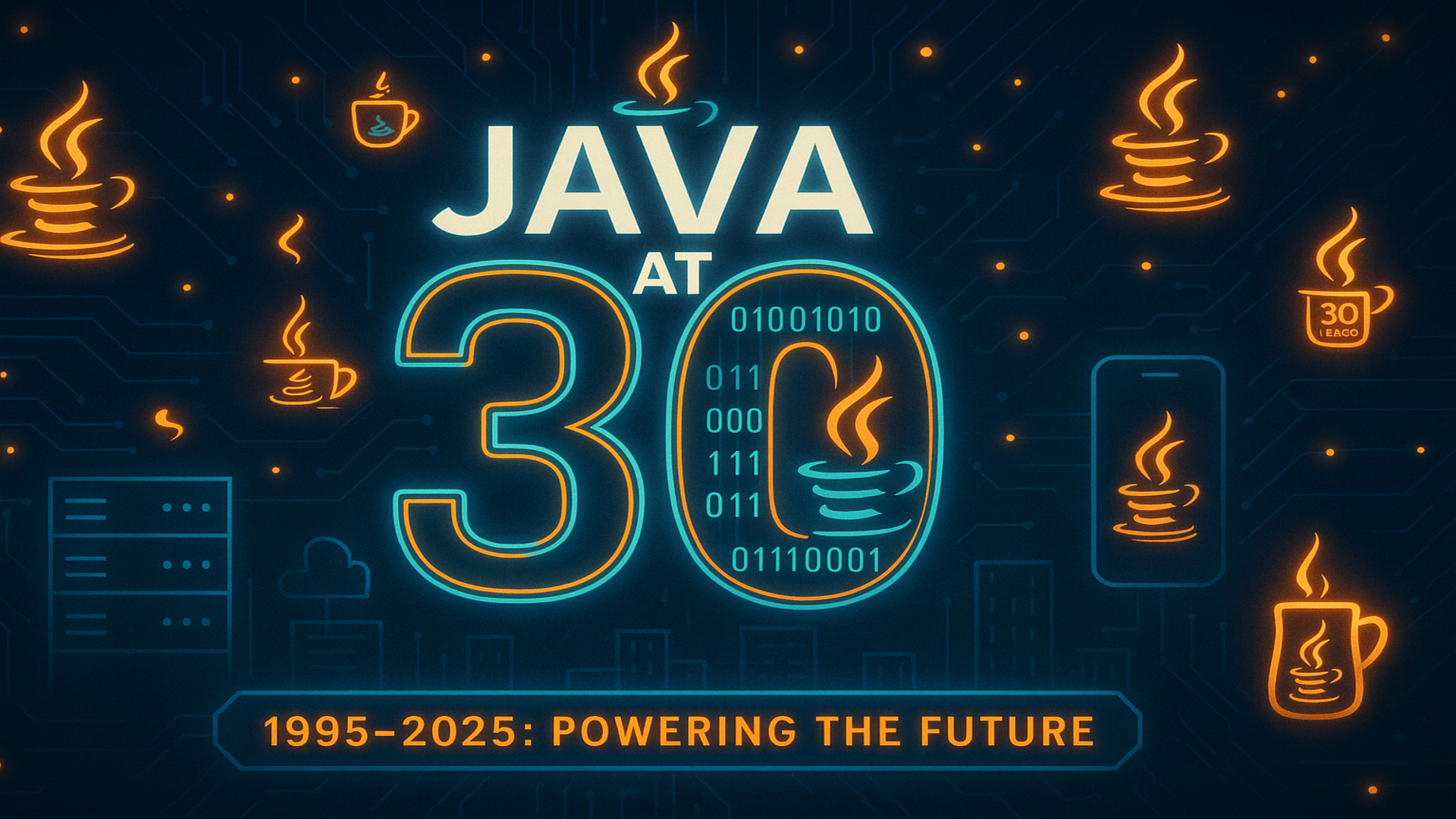The programming language that defines the internet is 30 years old today: Happy birthday, Java
Java just turned 30, and it’s still crushing cloud, AI, and enterprise work

- Java is 30 today, but remains one of the most widely used programming languages globally
- Java’s design philosophy prioritizes stability and backwards compatibility over flashy language trends
- The JVM remains Java’s secret weapon, enabling true cross-platform execution for decades
On May 23, 1995, a seemingly modest programming language called Java was released by Sun Microsystems.
At the time, it introduced the catchy promise of "write once, run anywhere" - a proposition that, despite sounding ambitious, resonated deeply with a generation of developers navigating a fragmented and rapidly evolving computing landscape.
Thirty years later, Java remains one of the most widely used programming languages in the world, embedded in everything from enterprise servers to cloud-native applications. But how did a language from the mid-'90s maintain its relevance amid relentless technological shifts?
A runtime built for endurance, not fashion
As Java turns 30, it’s worth re-examining its trajectory not just through celebratory anecdotes but also through the lens of its actual utility, structural longevity, and measured adaptability.
The occasion may call for cake and nostalgia, but the real story lies in the language’s persistent grip on serious computing tasks, and the skepticism it continues to attract from those who see it as either too slow to evolve or overly burdened by its own legacy.
Java's defining characteristic has always been platform independence. It achieved this through the Java Virtual Machine (JVM), which runs compiled bytecode on any operating system equipped with a compatible JVM.
This design helped Java flourish in the heterogeneous IT environments of the late '90s and early 2000s. Unlike many languages that depend on direct compilation for each target system, Java's intermediary form allowed for smoother portability.
Sign up to the TechRadar Pro newsletter to get all the top news, opinion, features and guidance your business needs to succeed!
Over the decades, Java's APIs and class libraries expanded, but with an unusual level of care: backward compatibility was always a priority. Developers weren’t required to rewrite code with every version upgrade.
This is a crucial advantage in enterprise systems, where uptime and reliability often outweigh syntactic novelty. Today, applications written decades ago can still run with minimal modification on modern JVMs, a level of continuity that few languages offer.
A cautious evolution of language features
Java has seen gradual enhancements, often arriving later than similar features in more agile languages. Lambda expressions, for example, only became part of Java with version 8 in 2014, long after functional programming had become mainstream elsewhere.
In its early years (1995–2000s), Java established itself in enterprise and mobile development with the introduction of Java 2, which included J2SE, J2EE, and J2ME. J2EE became the standard for web and enterprise applications, while J2ME gained popularity on mobile devices.
Java 5, released in 2004, marked a turning point with the addition of generics, enhanced for-loops, and annotations, moving Java closer to modern programming practices.
From Java 9 onward, the language has evolved steadily. The module system (Java 9), local variable type inference with var (Java 10), pattern matching (Java 16), and improvements in memory management reinforced Java’s adaptability.
Java 17, a long-term support release, reaffirmed the platform’s role as a robust and modern choice for software development.
Java in the cloud and beyond
Despite its age, Java has found a second wind in cloud computing. It is particularly well-suited for cloud-native applications, thanks in part to the emergence of GraalVM, a runtime that compiles Java into native machine code.
GraalVM’s native images can dramatically reduce startup times and memory usage, a key consideration for containerized environments and serverless platforms like AWS Lambda.
Java has also extended its reach into machine learning and high-performance computing through projects like Panama, which improves interoperability with native C/C++ libraries.
With tools like Jextract, Java developers can generate bindings to foreign code easily, sidestepping the clunky and error-prone Java Native Interface (JNI).
This technical depth is part of the reason Java continues to power complex systems. It's not flashy, but it's functional, and in enterprise environments, functionality beats fashion every time.
Projects shaping Java’s future and the evolution of syntax
The OpenJDK community has multiple projects aiming to refine Java’s performance and usability.
Project Leyden focuses on optimizing startup times and reducing memory footprints. Project Lilliput is exploring ways to shrink the object header to as little as 32 bits. Several other projects are underway, though not all have yielded immediate results.
Some, like Project Amber, show incremental but slow progress, while others, like Babylon, seem to outpace current implementations.
Nevertheless, one of the more welcome modernizations has been the addition of record types, which reduce boilerplate in data-holding classes. This improvement, introduced via JEP 359, aligns with the goals of the Valhalla project.
Pattern matching and enhanced switch statements are also nudging Java closer to functional programming languages in expressiveness.
However, these changes are often incremental and restricted to preview status for multiple releases before becoming permanent.
James Gosling, the creator of Java
Java’s 30th anniversary also brings renewed attention to 70-year-old James Gosling, the language’s creator.
His reflections are both proud and critical. Gosling has expressed satisfaction in hearing from developers whose careers were built on Java.
Looking back on Java’s evolution, he noted that features like lambdas, introduced in JDK 8, were ones he wished had been part of the language from the start.
Still, he emphasized the importance of thoughtful language design, explaining, “I never wanted to put in something that was not right.”
On AI, he’s blunt: “It’s mostly a scam,” he said, adding, “The number of grifters and hypesters in the tech industry is mind-rotting.”
His views on AI-assisted coding tools are similarly sharp. While he finds them amusing for basic tasks, he notes that “as soon as your project gets even slightly complicated, they pretty much always blow their brains out.”
Conclusion: Longevity through caution and clarity
Java’s 30th birthday is more than a symbolic milestone, it highlights a rare achievement in software engineering: staying relevant without constant reinvention.
While newer languages come with sleek syntax and flashy tooling, Java remains a trusted workhorse in sectors where stability, security, and predictability matter most.
Whether it's running a logistics backend, a financial system, or a cloud-native microservice, Java’s design ethos - pragmatism over novelty - continues to prove itself.
Its legacy isn’t built on hype, but on solving real problems at scale. And in that regard, it may very well be just getting started.
You might also like
- These are the best NAS devices around
- We've also rounded up the best cloud storage platforms on offer
- These are the best AI writers available

Efosa has been writing about technology for over 7 years, initially driven by curiosity but now fueled by a strong passion for the field. He holds both a Master's and a PhD in sciences, which provided him with a solid foundation in analytical thinking.
You must confirm your public display name before commenting
Please logout and then login again, you will then be prompted to enter your display name.